#Thomas Holt Knight
Text
Authors who contributed to Astounding Stories of Super-Science, in chronological order of the first story they wrote:
Victor Rousseau Emanuel
Sterner St. Paul Meek
Ray Cummings
M. L. Staley
Charles Victor Tench
Murray Leinster
Anthony Pelcher
Harold Vincent Schoepflin
Charles Willard Diffin
Hugh Barnett Cave
Sophie Wenzel Ellis
Will Smith
R. J. Robbins
Sewell Peaslee Wright
A. T. Locke
Thomas Holt Knight
Arthur Josephus Burks
Tom Curry
Lilith Lorraine
James P. Olsen
Roman Frederick Starzl
Edmond Hamilton
Harold Thompson Rich
Miles John Breuer, M.D.
Paul Ernst
Robert Henry Leitfred
Jackson Gee
William Merriam Rouse
Lloyd Arthur Eshbach
David R. Sparks
Hal K. Wells
#Astounding Stories of Super-Science#Rjalker compiles Astounding Stories of Super-Science#Victor Rousseau Emanuel#Sterner St. Paul Meek#Ray Cummings#M. L. Staley#Charles Victor Tench#Murray Leinster#Anthony Pelcher#Harold Vincent Schoepflin#Charles Willard Diffin#Hugh Barnett Cave#Sophie Wenzel Ellis#Will Smith#R. J. Robbins#Sewell Peaslee Wright#A. T. Locke#Thomas Holt Knight#Arthur Josephus Burks#Tom Curry#Lilith Lorraine#James P. Olsen#Roman Frederick Starzl#Edmond Hamilton#Harold Thompson Rich#Miles John Breuer#M.D.#Paul Ernst#Robert Henry Leitfred#Jackson Gee
0 notes
Text
The DC Body Swap Brawl
Body Swaps, Teams & Brawl Bracket

Team rosters below!
Team 1
Bart Allen (Impulse) in the body of Sir Justin (Shining Knight)
Slade Wilson (Deathstroke) in the body of Vykin the Black
The Joker in the body of Barda Free (Big Barda)
Team 2
Bruce Wayne (Batman) in the body of Bart Allen (Impulse)
Lightray in the body of Lex Luthor
Mark Moonrider in the body of Lightray
Team 3
Greg Saunders (Vigilante) in the body of Jo Mullein (Green Lantern)
Lex Luthor in the body of Ernst (The Brain)
Sir Justin (Shining Knight) in the body of Ralph Dibny (Elongated Man)
Team 4
Harleen Quinzel (Harley Quinn) in the body of Jason Blood (Etrigan)
Talia al Ghul in the body of Jaime Reyes (Blue Beetle)
Tim Drake (Red Robin) in the body of Big Bear
Team 5
Barda Free (Big Barda) in the body of Clark Kent (Superman)
Jason Todd (Red Hood) in the body of Serifan
Vykin the Black in the body of Jason Todd (Red Hood)
Team 6
Kon-El/Conner Kent (Superboy) in the body of Cliff Steele (Robotman)
Serifan in the body of Roy Harper (Speedy/Arsenal/Red Arrow)
Wally West (The Flash) in the body of Tim Drake (Red Robin)
Team 7
Beautiful Dreamer in the body of Harleen Quinzel (Harley Quinn)
Jason Blood (Etrigan) in the body of Diana Prince (Wonder Woman)
Roy Harper (Speedy/Arsenal/Red Arrow) in the body of Hank Hall (Hawk)
Team 8
Big Bear in the body of Beautiful Dreamer
Ralph Dibny (Elongated Man) in the body of Jon Kent (Superboy)
Ted Kord (Blue Beetle) in the body of Garth (Tempest/Aqualad)
Team 9
Billy Batson (Captain Marvel) in the body of Dawn Granger (Dove)
Dick Grayson (Nightwing/Robin) in the body of Scott Free (Mister Miracle)
Scott Free (Mister Miracle) in the body of Cassandra Cain (Batgirl/Black Bat)
Team 10
Cliff Steele (Robotman) in the body of Dick Grayson (Nightwing/Robin)
Guy Gardner (Green Lantern) in the body of Greg Saunders (Vigilante)
Klarion Bleak (Klarion the Witchboy) in the body of Jean-Paul Valley (Azrael)
Team 11
Duke Thomas (The Signal) in the body of The Joker
Leonard Snart (Captain Cold) in the body of Kon-El/Conner Kent (Superboy)
The Black Racer in the body of Zatanna Zatara
Team 12
Diana Prince (Wonder Woman) in the body of The Black Racer
Hank Hall (Hawk) in the body of Klarion Bleak (Klarion the Witchboy)
Orion in the body of Talia al Ghul
Team 13
Cassandra Cain (Batgirl/Black Bat) in the body of Bruce Wayne (Batman)
Jaime Reyes (Blue Beetle) in the body of Guy Gardner (Green Lantern)
Jo Mullein (Green Lantern) in the body of Duke Thomas (The Signal)
Team 14
Dawn Granger (Dove) in the body of Slade Wilson (Deathstroke)
Ernst (The Brain) in the body of Wally West (The Flash)
Zatanna Zatara in the body of Leonard Snart (Captain Cold)
Team 15
Clark Kent (Superman) in the body of Ace the Bat-Hound
Jean-Paul Valley (Azrael) in the body of Michael Holt (Mr. Terrific)
Jon Kent (Superboy) in the body of Billy Batson (Captain Marvel)
Team 16
Ace the Bat-Hound in the body of Mark Moonrider
Garth (Tempest/Aqualad) in the body of Orion
Michael Holt (Mr. Terrific) in the body of Ted Kord (Blue Beetle)
Brawl Rules | General Rules
12 notes
·
View notes
Photo

Patricia Ann Carroll (May 5, 1927 – July 30, 2022) Film, stage and television actress and comedian. She was known for voicing Ursula in The Little Mermaid as well as having a long acting career, including appearances in CBS's The Danny Thomas Show, ABC's Laverne & Shirley, and NBC's ER, as well as appearing in other guest-starring and series-regular roles on American television. In addition she voice-acted for several cartoon series. Carroll was an Emmy, Drama Desk, and Grammy Award winner, as well as a Tony Award nominee.
Carroll began her acting career in 1947. She got her first acting credit as Lorelei Crawford in the 1948 film, Hometown Girl. In 1952, she made her television debut in The Red Buttons Show. In 1955, her Broadway debut in Catch a Star! garnered her a nomination for a Tony Award for Best Featured Actress in a Musical. In 1956, Carroll won an Emmy Award for her work on Caesar's Hour and was a regular on the sitcom Make Room for Daddy from 1961 to 1964. She guest-starred in the drama anthology series The DuPont Show with June Allyson. Carroll also appeared on many variety shows of the 1950s, 1960s, and 1970s, such as The Steve Allen show, The Danny Kaye Show, The Red Skelton Show, and The Carol Burnett Show. In 1965 she co-starred as "Prunella", one of the wicked stepsisters in the 1965 production of Rodgers and Hammerstein's musical version of Cinderella.
In early 1976, Carroll was cast as Lily, the mother of Shirley Feeney (played by Cindy Williams) in the episode "Mother Knows Worst" on the hit ABC situation comedy, Laverne & Shirley. She portrayed Pearl Markowitz, the mother of Adam Arkin's character Lenny Markowitz, in the 1977 CBS situation comedy Busting Loose. Her frequent television roles in the 1980s included newspaper owner Hope Stinson on the syndicated The Ted Knight Show (the former Too Close for Comfort) during its final season in 1986; and that of Gussie Holt, the mother of Suzanne Somers' lead character in the syndicated sitcom She's the Sheriff (1987–1989).
Carroll also appeared on a variety of game shows including Celebrity Sweepstakes, You Don't Say, To Tell the Truth, Match Game 73, Password, and I've Got a Secret. (Wikipedia)
#Pat Carroll#TV#Obit#Obituary#o2022#The Danny Thomas Show#Cinderella#Busting Loose#She's the Sheriff#Caesar's Hour
18 notes
·
View notes
Text
The 2022 Bram Stoker Awards® Final Ballot

The Horror Writers Association (HWA) announced the Final Ballot for the 2022 Bram Stoker Awards®, an award they’ve been presenting in various categories since 1987 (see http://www.thebramstokerawards.com/)
Works appearing on this Ballot are Bram Stoker Award® Nominees for Superior Achievement in their Category, e.g., Novel. Congratulations to all those appearing on the Final Ballot.
THE 2022 BRAM STOKER AWARDS® FINAL BALLOT
Superior Achievement in a Novel
• Iglesias, Gabino – The Devil Takes You Home (Mullholland Press)
• Katsu, Alma – The Fervor (G.P. Putnam’s Sons)
• Kiste, Gwendolyn – Reluctant Immortals (Saga Press)
• Malerman, Josh – Daphne (Del Rey)
• Ward, Catriona – Sundial (Tor Nightfire)
Superior Achievement in a First Novel
• Adams, Erin – Jackal (Bantam Books)
• Cañas, Isabel – The Hacienda (Berkley)
• Jones, KC – Black Tide (Tor Nightfire)
• Nogle, Christi – Beulah (Cemetery Gates Media)
• Wilkes, Ally – All the White Spaces (Emily Bestler Books/Atria/Titan Books)
Superior Achievement in a Middle Grade Novel
• Dawson, Delilah S. – Camp Scare (Delacorte Press)
• Kraus, Daniel – They Stole Our Hearts (Henry Holt and Co.)
• Malinenko, Ally – This Appearing House (Katherine Tegen Books)
• Senf, Lora – The Clackity (Atheneum Books for Young Readers)
• Stringfellow, Lisa – A Comb of Wishes (Quill Tree Books)
Superior Achievement in a Graphic Novel
• Aquilone, James (editor) – Kolchak: The Night Stalker: 50th Anniversary (Moonstone Books)
• Gailey, Sarah (author) and Bak, Pius (artist) – Eat the Rich (Boom! Studios)
• Manzetti, Alessandro (author) and Cardoselli, Stefano (artist/author) – Kraken Inferno: The Last Hunt (Independent Legions Publishing)
• Tynion IV, James (author) and Dell’Edera, Werther (artist) – Something is Killing the Children, Vol. 4 (Boom! Studios)
• Young, Skottie (author) and Corona, Jorge (artist) – The Me You Love in the Dark (Image Comics)
Superior Achievement in a Young Adult Novel
• Fraistat, Ann – What We Harvest (Delacorte Press)
• Jackson, Tiffany D. – The Weight of Blood (Katherine Tegen Books)
• Marshall, Kate Alice – These Fleeting Shadows (Viking)
• Ottone, Robert P. – The Triangle (Raven Tale Publishing)
• Schwab, V.E. – Gallant (Greenwillow Books)
• Tirado, Vincent – Burn Down, Rise Up (Sourcebooks Fire)
Superior Achievement in Long Fiction
• Allred, Rebecca J. and White, Gordon B. – And in Her Smile, the World (Trepidatio Publishing)
• Carmen, Christa – “Through the Looking Glass and Straight into Hell” (Orphans of Bliss: Tales of Addiction Horror) (Wicked Run Press)
• Hightower, Laurel – Below (Ghoulish Books)
• Katsu, Alma – The Wehrwolf (Amazon Original Stories)
• Knight, EV – Three Days in the Pink Tower (Creature Publishing)
Superior Achievement in Short Fiction
• Dries, Aaron – “Nona Doesn't Dance” (Cut to Care: A Collection of Little Hurts) (IFWG Australia, IFWG International)
• Gwilym, Douglas – “Poppy’s Poppy” (Penumbric Speculative Fiction Magazine, Vol. V, No. 6)
• McCarthy, J.A.W. – “The Only Thing Different Will Be the Body” (A Woman Built by Man) (Cemetery Gates Media)
• Taborska, Anna – “A Song for Barnaby Jones” (Zagava)
• Taborska, Anna – “The Star” (Great British Horror 7: Major Arcane) (Black Shuck Books)
• Yardley, Mercedes M. – “Fracture” (Mother: Tales of Love and Terror) (Weird Little Worlds)
Superior Achievement in a Fiction Collection
• Ashe, Paula D. – We Are Here to Hurt Each Other (Nictitating Books)
• Joseph, RJ – Hell Hath No Sorrow Like a Woman Haunted (The Seventh Terrace)
• Khaw, Cassandra – Breakable Things (Undertow Publications)
• Thomas, Richard – Spontaneous Human Combustion (Keylight Books)
• Veres, Attila – The Black Maybe (Valancourt Books)
Superior Achievement in a Screenplay
• Cooper, Scott – The Pale Blue Eye (Cross Creek Pictures, Grisbi Productions, Streamline Global Group)
• Derrickson, Scott and Cargill, C. Robert – The Black Phone (Blumhouse Productions, Crooked Highway, Universal Pictures)
• Duffer Brothers, The – Stranger Things: Episode 04.01 "Chapter One: The Hellfire Club" (21 Laps Entertainment, Monkey Massacre, Netflix, Upside Down Pictures)
• Garland, Alex - Men (DNA Films)
• Goth, Mia and West, Ti – Pearl (A24, Bron Creative, Little Lamb, New Zealand Film Commission)
Superior Achievement in a Poetry Collection
• Bailey, Michael and Simon, Marge – Sifting the Ashes (Crystal Lake Publishing)
• Lynch, Donna – Girls from the County (Raw Dog Screaming Press)
• Pelayo, Cynthia – Crime Scene (Raw Dog Screaming Press)
• Saulson, Sumiko – The Rat King: A Book of Dark Poetry (Dooky Zines)
• Sng, Christina – The Gravity of Existence (Interstellar Flight Press)
Superior Achievement in an Anthology
• Datlow, Ellen – Screams from the Dark: 29 Tales of Monsters and the Monstrous (Tor Nightfire)
• Hartmann, Sadie and Saywers, Ashley – Human Monsters: A Horror Anthology (Dark Matter Ink)
• Nogle, Christi and Becker, Willow – Mother: Tales of Love and Terror (Weird Little Worlds)
• Ryan, Lindy – Into the Forest: Tales of the Baba Yaga (Black Spot Books)
• Tantlinger, Sara – Chromophobia: A Strangehouse Anthology by Women in Horror (Strangehouse Books)
Superior Achievement in Non–Fiction
• Cisco, Michael – Weird Fiction: A Genre Study (Palgrave Macmillan)
• Hieber, Leanna Renee and Janes, Andrea – A Haunted History of Invisible Women: True Stories of America's Ghosts (Citadel Press)
• Kröger, Lisa and Anderson, Melanie R. – Toil and Trouble: A Women’s History of the Occult (Quirk Books)
• Waggoner, Tim – Writing in the Dark: The Workbook (Guide Dog Books)
• Wytovich, Stephanie M. – Writing Poetry in the Dark (Raw Dog Screaming Press)
Superior Achievement in Short Non–Fiction
• Murray, Lee – “I Don’t Read Horror (& Other Weird Tales)” (Interstellar Flight Magazine) (Interstellar Flight Press)
• Pelayo, Cynthia – “This is Not a Poem” (Writing Poetry in the Dark) (Raw Dog Screaming Press)
• Wetmore, Jr., Kevin J. – “A Clown in the Living Room: The Sinister Clown on Television” (The Many Lives of Scary Clowns: Essays on Pennywise, Twisty, the Joker, Krusty and More) (McFarland and Company)
• Wood, L. Marie – “African American Horror Authors and Their Craft: The Evolution of Horror Fiction from African Folklore” (Conjuring Worlds: An Afrofuturist Textbook for Middle and High School Students) (Conjure World)
• Wood, L. Marie, “The H Word: The Horror of Hair” (Nightmare Magazine, No. 118) (Adamant Press)
#publishing news#awards news#horror writers association#bram stoker award#2022#final ballot#science fiction#nonfiction#screenplay#graphic novel#poetry#antholgy
2 notes
·
View notes
Text
"King’s administration, however, had not shown any sign of bending much in the CPR’s direction. Indeed, his government implemented
Borden’s railway legislation, passing the Canadian National Railways
Act of 1919, and appointed an outstanding executive, Sir Henry Thornton, to the helm of the CNR in 1922. Thornton was a U.S.-born railway executive and engineer by background who had moved up the corporate hierarchy of the Pennsylvania Railroad before taking a general manager’s position with the Great Eastern Railway in England, at the time the world’s largest commuter system. After the outbreak of war, Thornton’s technical knowledge was drawn upon in the British war effort as he was cast into the role of inspector-general for the British Expeditionary Forces and made “responsible for operation of the whole intricate system upon which the existence of the British line depended.” Embracing advanced views on unions and labour relations, Thornton was respected by Great Eastern Railway employees and was a personal friend of J.H. Thomas, a major figure within Britain’s national railway union. It was Thomas who mentioned the CNR position to Thornton – a position that had opened up following the resignation of D.B. Hanna, who resigned in protest over “political interference” in CNR affairs exercised by the recently elected Liberal administration of Mackenzie King. Knighted for his war services, the affable
Thornton had gained a reputation as a railway “superman,” though his position with the Great Eastern had been extinguished after the government passed legislation to reorganize the British railway system. Thornton was quick to charm the Canadian public as well as CNR employees. Thornton “has quite won the hearts of all who have met him,” exclaimed Flavelle. More troubling to Flavelle and moderate progressives such as Dafoe, however, were Mackenzie King’s blatant political appointments to the CNR board. This was a departure from Borden’s ideal of nonpartisan, businesslike operation. Nonetheless, with Thornton at the helm, the CNR had behind it a power of incalculable importance: popular opinion.
Beatty was quick to see public relations as the most significant challenge facing the CPR. In 1923, encouraged by Beatty’s recent public pronouncements, Lord Atholstan commenced his “Whisper of Death” campaign in the Montreal Star, which forecast an oncoming deluge resulting from a mounting national debt, made intolerable by
costs associated with the CNR. Beatty considered Thornton nothing more than a “showman,” and sought to meet his challenge and correct “political misrepresentation” about the railways through an institutional advertising campaign. (Thornton, for his part, considered Beatty “a lawyer [and] not a railway man.” ) Indicative of this public relations drive, Dafoe reported in the summer of 1925 that
“unfair competition invariably comes up” in discussions with high CPR officials; “[t]hey hope for the Shaughnessy plan or a merger.” In April, Clifford Sifton reported: “I do not think the Canadian Pacific has ever been as active in propaganda as it is now. Their intrigues and efforts to influence official opinion are in evidence everywhere.” Sifton asked Dafoe to have the Winnipeg Free Press “declare war on the scheme and fight it out.”
This drive had its effect in Ottawa, where a Senate committee was established to investigate the railway question in 1925. At the committee’s closed-door hearings, Beatty and Sir Herbert Holt presented cases for railway amalgamation so similar that a summary of the proceedings described their presentations as one position. The Senate proved particularly responsive to CPR influence, and the committee’s report presented an opinion generally in line with Beatty’s case, which Beatty himself would reference in arguing for railway unification in the future. Beatty and Holt, as we have seen, met with King the same summer to discuss railway policy, and Beatty continued to press King to leave the door open for railway unification later in the year. But the political bagmen who inhabited the Senate found it easier to embrace railway consolidation than the MPs who counted on popular support in their constituencies.
This was somewhat stifling to the aspirations of Beatty and his moneyed allies. With neither major political party embracing his position on the railway question, Beatty remained “neutral” in the 1926 federal election, preferring to support favoured individuals in both major parties. While Beatty finessed his way around Ottawa, much of the railway battle was being waged in direct business competition, made more lucrative by the boom at the end of the 1920s as the two companies engaged in competition through line extensions, hotel construction, expansion of shipping fleets, and improvements in commuter services. While Beatty advocated consolidation of the two competing systems under private ownership, economic expansion during the 1920s made competition a viable option. Indeed, Beatty reported that $353,346,450 in dividend payments were distributed to common and preferred shareholders during the period from 1918 to 1930, representing 85 per cent of the company’s total earnings “after deducting fixed charges and pension fund appropriations.”
Thornton, meanwhile, modernized the CNR and emerged as a national icon of sorts, emblematic of the possibilities of public enterprise and cooperation between the state, capital, and labour, culminating in Thornton’s address at the American Federation of Labor’s international convention in 1929 in Toronto, where Thornton proclaimed the beginning of “a new labor era.” The “very particular conjunctures of context, character, and circumstance” that underpinned Thornton’s rise, as Allen Seager has observed, disintegrated with the arrival of the Great Depression. Thornton would be one of its first and most public victims, a public sacrifice encouraged by Beatty as he moved even deeper into political activism.
The Duff Commission and “the Tragedy of Henry Thornton”
Meighen, Roger Graham has written, “was not spared the intrigues of
the Montreal tycoons” as talk that R.B. Bennett would be his successor emerged in early 1926; Bennett was “known to hold more ‘businesslike’ opinions about railway matters” than Meighen, whom Bennett once famously described as “the gramophone of Mackenzie and Mann.” Bennett’s election as leader of the Conservative Party in 1927 was an encouraging sign and a small victory for Beatty and St James Street. They respected the independently wealthy Bennett, believing him to be above petty politics; they shared his deep sense of loyalty to the British Empire; and they felt assured about his protectionist tariff policies. “St. James Street favours Bennett because of his protectionist policies,” wrote Prime Minister King pessimistically before the 1930 election. King also learned that “Beatty was favourable to Bennett’s views.” The list of Montreal donors to Bennett’s campaign, observed historian Larry Glassford, “read like a Who’s Who of the Montreal financial and industrial establishment.”
Formerly the chief western solicitor of the CPR and a major shareholder in the Royal Bank, Bennett’s immersion in business and his history with the CPR certainly helped to make him a more reliable candidate for wealthy Montreal residents – but on the campaign trail such connections were a potential liability. With his proclamation “Amalgamation never, competition ever” in a campaign speech, Bennett sounded publicly his independence from Beatty in an attempt to assure western voters that he would not cede a railway monopoly to the CPR. Popular appeal again seemed to trump Beatty’s long-term goals. The seeds of future conflict between Bennett and Beatty were planted even before the electoral triumph of the Bennett Conservatives in 1930.
Canada had more railway mileage per capita than any other nation
by the 1930s. The financial strain of maintaining two competing national lines had seemingly resolved itself during the boom years of
the late 1920s, only to reemerge as a sudden crisis once the economic slump set in. The financial position of the CPR worsened: in the first half of 1931, the CPR reduced dividend payments and soon after suspended payments altogether. Worse still was the position of the CNR, which was already weighed down by an unwieldy capital structure that included old debts accumulated by Mackenzie and Mann and the Grand Trunk. Company earnings fell by $46,249,000, and Thornton attempted cost-cutting measures without implementing wholesale layoffs.
Philosophically opposed to public enterprise, Bennett viewed Thornton as a creature of the King government; and he supported a campaign that conflated Thornton’s lavish private lifestyle with his management of the CNR. While in London, England, in October 1930, Prime Minister Bennett wrote his minister of railways and canals, R.J. Manion, about the shopping activities of Thornton’s wife:
President’s wife here purchasing furniture. President cabled her improvements would cost eighteen thousand dollars and she must spend less for furniture. She says building requires improvements. Whatever action you take entirely satisfactory. I was only desirous [to] communicate casual information.
The CNR directors had approved funds for Lady Thornton to furnish
their Pine Avenue home “in a manner appropriate for the residence of
a president.” But, having received this “casual information” from Bennett, Manion reneged on the agreement. Thereupon Sir Henry perceived that “a concerted plot to ruin his personal reputation” was in the works. He pressed Manion in December to honour the agreement that $20,000 in CNR funds be made available for renovations to his house, explaining that he was “very hard up, stock losses, etc.” Manion did not bend and described his reply to Bennett:
I told him that if the case came up in the House I wanted to be able to say that we had nothing to do with the matter – that the whole arrangement had been made under the previous administration.
Thornton would serve as a sacrificial lamb for the supposed improprieties of the King administration.
The following year the Railway Committee of the House of Commons provided new opportunities to undermine Thornton’s public reputation and associate him with the supposedly spendthrift ways of the Liberals. Manion, R.B. Hanson of New Brunswick, and Dr Peter McGibbon, MP for Muskoka-Ontario, were among the most active Conservative members to tar Thornton in the House, citing imprudent company expenditures on hotels, suggesting (falsely) exorbitant company salaries, and drawing attention to Thornton’s salary and personal expense account. Though Beatty admitted the unfairness of some of the attacks levelled against Thornton, he also recognized new political opportunities on the horizon.
Upon Beatty’s suggestion, a beleaguered Thornton called for the
formation of a royal commission to study the railway question. And though Beatty and Holt complained about delays in getting the commission established, the Duff Commission was finally formed in November. Before the commencement of the commission’s hearings, Beatty was “very hopeful that something constructive” could be achieved and lauded its personnel as “really outstanding.” Chaired by Supreme Court Judge Lyman Duff, the commission included six other prominent figures with weighty business – and some academic – credentials: Joseph Flavelle; Beaudry Leman of Montreal, general manager of the Banque Canadienne Nationale and president of the Canadian Bankers’ Association; U.S. railway executive Leonor Fresnel Loree, president of the Delaware and Hudson Railway Company; Lord Ashfield, head of London’s underground system, the Metropolitan Railways; Walter Charles Murray, president of the University of Saskatchewan; and the Shediac, New Brunswick, physician John Clarence Webster, a respected Conservative, museum patron, and personal friend of Howard P. Robinson.
From his office in Winnipeg, Dafoe reflected upon the significance of the commission’s establishment. “Perhaps I am getting too suspicious in my old age,” he wrote Free Press correspondent John A. Stevenson
but I have a most decided ‘hunch’ that this Commission was appointed to do a particular chore, and that with perhaps two exceptions its members know what the chore is to be. I think the linked money powers in Canada and the United States, with all their subordinate and associate interests, have decided that the time is opportune to oblige Canada to remove her desire to own and operate her own railways.
Dafoe believed that – as part of this plot to gut the CNR – the same tactic deployed in England to dislodge the Labour government might be deployed in Canada: “National Government.”
Had Dafoe become “too suspicious” in old age? Not entirely. The
ever-domineering Bennett had taken a personal interest in the formation of the commission and appeared to be in closer contact with St James Street than the responsible minister, Manion. Winnipeg Free Press correspondent Grant Dexter reported on 15 November that Manion was in “complete ignorance” about the commission’s personnel, but two weeks earlier a private memorandum written by Floyd Chalmers of the Financial Post revealed that Sir Herbert Holt was up to date on recent developments in the selection of commission personnel. “I want to take back anything about believing that amalgamation is off,”
wrote Dexter.
Meanwhile, Thornton’s experience at the hands of the Conservatives had led him to an about-face: in a meeting with Dafoe at Winnipeg’s Fort Garry Hotel on 12 October, Thornton lamented that he had lost faith in the ideal of public enterprise – the CNR, in the interest of its own survival, would have to come under the control of some form of unified management along with the CPR. He told Dafoe that he and Beatty had been working on such a plan together, a fact later confirmed by Lady Thornton. After Thornton’s death, his biographer, D’Arcy Marsh, would write (in 1934) that Thornton had been made “constitutionally incapable” of opposing Beatty, and Dexter believed that Thornton had sold out to Beatty to save his job. Dafoe, Marsh, and Dexter were overly cynical in assessing Thornton’s actions. And though Dafoe’s suspicions had some basis, he greatly exaggerated the level of coordination between Bennett and Beatty.
The proceedings of the Duff Commission commenced on 4 December 1931 with the commissioners interviewing Sir Henry Thornton in a session closed to the public – as was the testimony of all senior railway and government officials. Thornton proposed the establishment of a ten-person “superboard,” consisting of the presidents of each railway company, two Liberal, two Conservative, and two Progressive representatives, a representative of labour, and a representative of the minister of railways and canals. Though Dafoe and others, not privy to his testimony at the time, might have considered it something of a sellout, such judgments are overly harsh. Thornton believed the board, which would oversee both railways and enforce cooperation, would be able to conciliate various interest groups, and his plan thus attempted to establish a mechanism whereby a form of democratic control over the management of the country’s railways would obtain.
It was Thornton’s embrace of the principle of democratic control that set him apart from Beatty – and here Thornton was steadfast. The very goal of exercising democratic control over Canada’s railway systems was thought dubious by commission members, however. Commissioner Loree asked CNR vice-president S.J. Hungerford whether “it be a fair statement to make that a democratic form of government is no competent agency to carry on the railroad business?” To Hungerford’s assertion that “[w]e are seeking to do it,” Loree replied: “But are they doing it? The records do not show they are, because they are going behind every year.”
With the questioning at times threatening to transgress the line of
gentlemanly decorum, Thornton stressed that management of the CNR was a matter of public policy and thus did not necessarily need to justify itself on the basis of profits and losses. In response to a statement by Joseph Flavelle that such an enterprise should not be maintained, Thornton asserted that it was “a matter for the Canadian people to decide.” Beatty appeared before the commission the next day and presented a case that was ideologically much easier for the commissioners to appreciate.
If, on one hand, the privately owned system finds it is unable to maintain its credit in an unequal struggle with the long purse of the state,” Beatty said before the commission, “a grave injustice will be done to the shareholders of a corporation which has fulfilled its fifty-year old contract with the nation, and which has made its full contribution to the upbuilding [ sic ] of the Dominion. Such a consummation would cause most serious injury to the reputation of this young country as a field for private capital.
The cases of Beatty and Thornton differed at a fundamental level, centring not only on the appropriate role of the state in the nation’s economic life but on the appropriate role of public opinion in shaping economic policy. Beatty opposed government intervention, except in a helping role to private capital – steamship subsidies and protective tariffs, for example (which the CPR benefited from). He was also generally dismissive of popular opinion. Thornton, he believed, had succeeded by “showmanship” and “mob appeals.” The deluded public, in Beatty’s estimation, deserved only a very limited role in deciding public policy, and, as we shall see, he turned to “educational” work to address this issue. Thornton, by contrast, accepted some degree of “political” interference in economic affairs as inevitable under any democratic government. “After all in any form of popular government it must be accepted as axiomatic that the business of government is politics and,” Thornton stated before the commission on 4 January 1932, “irrespective of whether one likes it or not, politics is something with which a government must reckon in all its activities.”
Though commission members disliked the idea of public influence over railway management, a view that would be plainly expressed in their report, they were at least equally concerned with the prospect
of leaving the nation’s railways in the hands of a private monopoly.
Beatty proposed a “unification” plan of the two systems under CPR
management that would maintain separate ownership: CPR personnel would act as trustees of the government’s property. Commissioners Flavelle and Loree expressed concern over the de facto monopoly that Beatty’s plan would create. (Beatty privately dismissed Flavelle’s business philosophy, which stressed the role of competition, as “the Flavelle school of ruthless business brutality.” ) Commissioner Webster was somewhat less worried about monopoly.
“The fear of monopoly did not terrify me, as it so strongly impressed Sir Joseph,” he wrote to Meighen in November 1932, “nor did I shrink from submitting the responsibility of conducting so great an undertaking to a single management.” Beatty did not try to hide the monopoly implications of his plan but rather defended the principle of monopoly itself, arguing that “some of the most efficient, most widely administered and most publicspirited public corporations on this continent are monopolies.” “They are in the main,” he continued, “successful, efficient and progressive, and they are administered by men of high character and great ability.” For Beatty, who believed business enterprise to be a form of public service, the most important factor was the quality of business leadership. Since management would be composed of “business statesmen of the highest type,” he did not believe the “question of autocracy” could arise.
Beatty appeared before the commission again on 19 February and
presented a memorandum outlining the benefits of unification, in which he reiterated the need to impose businesslike management over the country’s railways. Asked by commissioner Loree whether a board of directors consisting of CPR and government representatives might successfully manage a unified system, Beatty foresaw two problems. First, the government would be exercising too much active influence in railway matters; second, government involvement would render “doubtful the type [of individuals] that would be selected for appointment to the Board.” Such an arrangement could only be successful if independence from the government were established; Beatty suggested an independent tribunal might select government representatives from “the Canadian Bankers Association, the Canadian Chamber of Commerce and a Judge of the Supreme Court” and be “certain to get the type of men whose ability would justify the selection.”
Beatty’s formulations were latently elitist and antidemocratic: “quality” leadership was presumed to reside in the upper echelons of the business community, and management of the railway system could not be entrusted to any other segment of the population – indeed, it was necessary to insulate such leadership from the pressures of popular opinion. According to Beatty’s beliefs, efficient
railway policy required that it not be formulated outside the meritocratic order that decided success or failure in private enterprise; “political” interference was unacceptable. Beatty was not unique in this mindset; the commission’s report echoed similar sentiments.
The commission’s proceedings prefaced Thornton’s final fall from grace in public life. Thornton had been divorced and quickly remarried (to a much younger woman) several years earlier, and he was known to enjoy nightlife. These were not important problems while the CNR was operating at a profit, but once that changed, Thornton’s personal life was conflated with his management style to devastating effect. He managed the railway the way he lived, his detractors claimed. Called once again before the House of Commons to testify, the gentlemanly decorum of the commission hearings evaporated, Thornton was subjected to a verbal assault by R.B. Hanson. Thornton’s public tarring eroded his political support in the House of Commons. Teetotaller, opposition leader, and political acrobat Mackenzie King acquiesced to this portrayal of Thornton, writing in his diary: “The truth is Thornton has not measured up of late, has drunk too much – far too self-indulgent.” Thornton would later write to King that he had departed from Ottawa under the auspices of a “reign of terror,” “always ‘shadowed’ by a detective.” “The Canadian Pacific Ry. has … exercised a sinister influence in Canadian politics – It has never hesitated at bribing + corruption in all its forms and it represents the worst type of predatory capitalism,” Thornton wrote to King the following day. “It has ruined men.” Undoubtedly, Thornton counted himself among the “ruined men”: “I feel fairly certain I might have remained where I was had I cared to go along with Beatty.”
- Don Nerbas, Dominion of Capital: The Politics of Big Business and the Crisis of the Canadian Bourgeoisie, 1914-1947. University of Toronto Press, 2013. p. 125-133.
#canadian pacific railways#canadian national railways#railway construction#track laying#train stations#railway capitalism#great depression in canada#the pressures of the great depression#capitalism in crisis#capitalism in canada#railway company#royal commission#canadian politics#canadian elite#canadian history#dominion of capital#mackenzie king#r. b. bennett
0 notes
Text
Toolroom House 2024-02-08

DATE CREATED: 2024-02-08
Tracklist :
Back Again - Alaia & Gallo.mp3
Bala - Thomas Newson & Anthony Attalla.mp3
BEATS FOR THE UNDERGROUND - Mau P.mp3
Biggest Regret - Gorgon City & Bbyafricka.mp3
Boy (feat. JONES) - Illyus & Barrientos & KC Lights.mp3
Calling - Ellis Moss.mp3
Dance to the Music - Low Steppa & Tony Romera.mp3
Deeper Love - Niko The Kid.mp3
Don't Abuse It - Mark Knight & Armand Van Helden.mp3
Downlow - CASSIMM.mp3
Flashback - General Moses.mp3
Frikitona - Andruss.mp3
Fui Fui - Holt 88.mp3
Get On the Floor (Hotswing Remix) - Yvvan Back.mp3
Give It 2 Me - ManyFew & Katy Alex.mp3
Give Me - Will Clarke & BURNS.mp3
Headstrong (feat. Penny F.) - Piem.mp3
Higher - LasKee.mp3
I Can't Take No More - Tita Lau.mp3
Kyrenia - Sllash & Doppe.mp3
Levanta - Tom Enzy, Siwell & Vadi.mp3
Levitate - Sonny Fodera & Marten Hørger.mp3
Lost in Acid (Crusy Remix) - David Tort & Crusy.mp3
Make It Work - Bontan.mp3
Make U Sweat - Martin Ikin.mp3
Move
Read the full article
0 notes
Text
Toolroom House 2024-02-08

DATE CREATED: 2024-02-08
Tracklist :
Back Again - Alaia & Gallo.mp3
Bala - Thomas Newson & Anthony Attalla.mp3
BEATS FOR THE UNDERGROUND - Mau P.mp3
Biggest Regret - Gorgon City & Bbyafricka.mp3
Boy (feat. JONES) - Illyus & Barrientos & KC Lights.mp3
Calling - Ellis Moss.mp3
Dance to the Music - Low Steppa & Tony Romera.mp3
Deeper Love - Niko The Kid.mp3
Don't Abuse It - Mark Knight & Armand Van Helden.mp3
Downlow - CASSIMM.mp3
Flashback - General Moses.mp3
Frikitona - Andruss.mp3
Fui Fui - Holt 88.mp3
Get On the Floor (Hotswing Remix) - Yvvan Back.mp3
Give It 2 Me - ManyFew & Katy Alex.mp3
Give Me - Will Clarke & BURNS.mp3
Headstrong (feat. Penny F.) - Piem.mp3
Higher - LasKee.mp3
I Can't Take No More - Tita Lau.mp3
Kyrenia - Sllash & Doppe.mp3
Levanta - Tom Enzy, Siwell & Vadi.mp3
Levitate - Sonny Fodera & Marten Hørger.mp3
Lost in Acid (Crusy Remix) - David Tort & Crusy.mp3
Make It Work - Bontan.mp3
Make U Sweat - Martin Ikin.mp3
Move
Read the full article
0 notes
Text
Birmingham's bad baronets: the unedifying story of Aston Hall

Aston Hall is an English country house with a difference. First, it's not in the country at all, but wedged between Birmingham's bleak ring road and the city centre.
And you can park right outside the gate for free – it’s not like those National Trust or English Heritage car parks that charge extortionate rates to non-members.
That is because Aston Hall, unlike most other grand houses in Britain, is run by a public body rather than a private charity. Its owner is the Birmingham City Council.
The difference is even more palpable inside. At the reception, you're met with bored-looking municipal workers. As you go from room to room, the information is not provided by eager, middle-aged volunteers but by sombre explanatory panels.
And their chief purpose is to expose the sins of the aristocrats who once lived here, the Holte family.
From a panel entitled "Who were the Holtes?" we learn that in the late Middle Ages they "gained an income from rents and the natural resources found on their lands" and "increased their wealth and status by marrying into other important local families".
In other words, for centuries the Holtes claimed proprietary rights on both local pastures and the reproductive organs of their children and reinvested the proceeds into expelling more peasants.
The visitor is then introduced to the man who built Aston Hall, Sir Thomas Holte (1571-1654).
By the early 1600s, he had been knighted by James I and the family had manors across the region. But none of that was enough for him: "Thomas wanted something newer, grander and more fashionable to fit his aspirations," we are told.
I was not surprised to learn in the next room that Tom had "a reputation for being aggressive, unflinching, and vindictive".
He once sued a neighbour, accusing him of "splitting his cook's head" (the Holtes regarded abusing staff as their exclusive privilege – more on this subject later). He also "disinherited his son for marrying against his wishes".
A portrait in the Great Hall shows him to be every bit the imperious jerk he is described as.
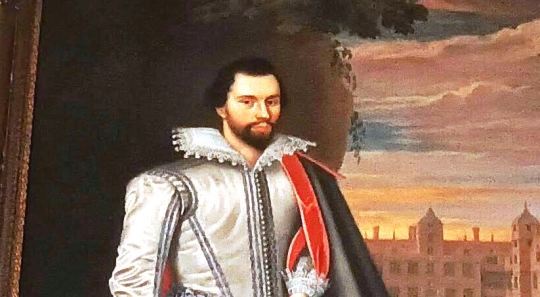
One can easily imagine the dialogue between Thomas and his manager in 1611 when Thomas got a baronetcy.
"Congratulations, Sir!"
"What are you blathering about?"
"I understand King James has made you a baronet. You have arrived!"
"Nonsense. Do you know how I had to pay that lecherous spendthrift of a monarch to get this measly title? I should be a peer of the realm by now. But let’s not talk about it. What is my useless son up to these days?"
"Good news there, Sir. Edward has decided to marry Elizabeth King."
"The bishop's daughter?"
"A very suitable match indeed!"
"I didn't get my elder son a position in the royal household, at considerable expense, so he can marry into clergy. I'm changing my will forthwith! Get me my solicitor on the phone."
"On the what?"
"Do I have to do everything myself? I am surrounded by IDIOTS."
Thomas's relations with the Stuart monarchy didn't improve when Charles I succeeded his father in 1625.
The new king stuck up for young Edward who, he insisted, was doing a great job at court and had not married beneath his station. This cut no ice with Thomas Holte, who still refused to allow his son to inherit his title or lands.
The Civil War of the 1640s was a catastrophe for the Holtes. But it's difficult to feel sorry for the old baronet, who by then was in his 70s.
As the conflict between Crown and Parliamentary forces engulfed the Midlands, King Charles went to Aston Hall to check which side this awkward baronet was on.
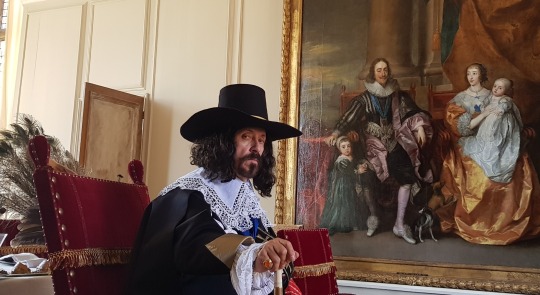
Besides the giant chip on his shoulder, Tom had several reasons not to welcome his king with open arms. The first was financial. The panel in King Charles' chamber summarises his predicament thus:
This is the room where King Charles I slept that on the night of 18th October 1642. In August that year, Charles had declared war on Parliament and was now on his way south to London with an army of over 13,000 men.
Charles would have been given the use of a suite of rooms here at the Hall. He would have had courtiers, servants, carriages, carts, and horses with him, all of whom would have needed housing and feeding at great expense to Thomas. You could not say no to a visit from the king. It would have been both an honour and an imposition: it was not unknown for families to be bankrupted by the costs of a royal visit.
But the main reason for Holte's misgivings about the king's visit was pride. He was struggling to find a replacement for his Stuart toady of a son - Tom had just married a woman 40 years his junior hoping that she would bear him a proper heir.
And now, after decades of disrespect, Charles had the nerve to come to him for support! Of course there was no mention of a peerage.
Tom was damned if he was going to roll over.
Charles, never the most tactful of leaders, didn't help himself either. Turning up with his retinue at Aston Hall, he said: "Among the soldiers camped out there is your brave son Edward, who has been an impeccable court stalwart for years and is now laying down his life for his king. I have no doubt that the father will honour the family name in the same loyal fashion."
Thomas said: "I'll certainly think about it."
In the end– with his son lying dead on a battlefield and the Roundheads going after anyone remotely associated with Charles – Thomas reluctantly identified with the royal camp.
Parliamentary forces swooped on Aston Hall in late 1643. The siege left deep scars. A cannonball smashed through the banister on the Great Stairs and the damage is still visible.
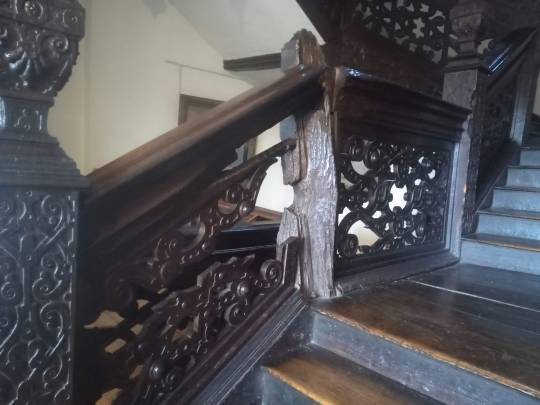
The servants were caught up in the fighting, as the sign explains:
After three days of defending the house and trying to stay alive whilst shots fired all around, the Hall's inhabitants surrendered. The Parliamentarian soldiers entered the house and ransacked it. The repercussions of this event would affect the Holte family for several generations. They kept the damaged balustrade intact as a reminder of their role in the Civil Wars.
Sir Thomas emerged from the ordeal a broken man. Parliament condfiscated his estates. In 1650 he was forced to pay a fortune to get them back. By then he was pushing 80 and had given up on one last shot at fatherhood.
He was content to die at home, which he did in 1654. With all his sons dead, disinherited or both, the title and Hall went to his grandson Robert.
The Holtes name was mud under Cromwell. But Robert does not seem to have fared particularly well either after the Stuarts were restored in 1660.
It's unclear whether he had any activity besides gambling. He died in 1679 "in considerable debt", the sign says.
There's a white sheep in every family. Robert's son Charles (1649-1722) is the only baronet the curators have anything good to say about.
They describe him as "a man of wide intellectual interests including music, medicine, and philosophical research".
He was apparently good at financial management too: he paid off his father's debts and put the estate in order. Charles Holte was happily married to a woman called Anne. "They had 12 children, and when Charles was away Anne wrote him long and affectionate letters."

Predictably, the next generation reverted to type.
The fourth baronet answered to the interesting name of Sir Clobery Holte (1681-1729). By the time he came into his inheritance, the estate was on a sound footing. But that was more than you could say of Clobery's marriage.
He was a sad, tight-fisted git who chose a coquette for a wife. Her name was Barbara. They argued bitterly over what he regarded as her extravagance and ended up living apart.
Their two portraits suitably stand at opposite ends of the Drawing Room.
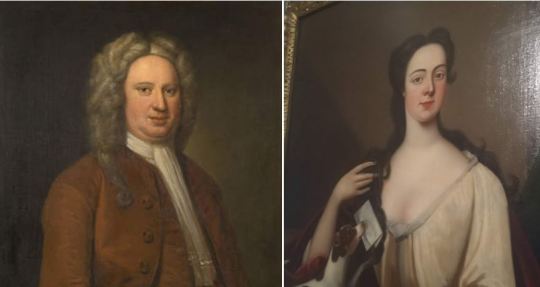
The fretting and fighting can't have done much for Clobery's blood pressure. He died aged 48, but not before making his mother the guardian of his two sons. Barbara was not allowed to look after them.
The elder, Lister, turned out to be a chip off the old block when it came to money. The curators are eloquent on the subject:
In the 17th and 18th centuries the cooks in great houses were usually male, but in 1749 Sir Lister Holte was employing a female cook. Her yearly wage of £10 was lower than her male equivalents, but the same as Aston Hall's brewer. Finances at Aston were very tightly managed and the cook was denied her customary right of being able to sell off the kitchen fat herself.
Another vivid illustration of the way the Holtes treated staff can be found in an attic room called "Dick's Garret".
Once again, I’ll let the Hall’s official historians tell the story:
Legend has it that it was named after a young boy named Dick who was one of Sir Thomas's servants. The story goes that one day Dick stole a piece of bread from the kitchen but was caught and locked in this attic until Thomas got home and could decide on his punishment. Stealing bread was a crime and Thomas was well-known for his vicious temper. Terrified about what might happen to him, Dick took his own life. His ghost is said to still wander these rooms.

But the custodians of the family's history reserve their sharpest barbs for Sarah Holte (née Newton, 1755-1794) who, we are told, inherited "forced labour camps" in Barbados.
Her boudoir has been redecorated as a "Black girl's dressing room" to "highlight the Black female experience in modern society, emphasising the societal dehumanisation of Black women".
It features a poem commissioned from a young local poet, entitled "Black is Beautiful: Blackness without Apology".
Here is an excerpt:
Dear Lady Holt
Hello Sarah Newton
Aka Lady Holt
But you are no lady, just a lady at fault
Here we are in your previously owned boudoir
I am a descent of the previously enslaved...
I am here to confront your participation
in the Atlantic Slave trade...
Here I am a Black women taking up space in your own place
I may have not been alive to put you in your place
But I am here now on behalf of my race
Surrounded by beautiful, Black faces
No longer your possessions...
Yet the chains of history challenges our every step
So we are never truly free
Micro-aggressions
Suppression of self
That stops us from being Black queens.
I’m not sure the Holtes deserved more stick than past residents of other grand houses in the country. But I do know that if Aston Hall had been run by English Heritage or the National Trust, its story would have been told very differently.
The main insight I gained from our visit is that the difference in ethos and customer-relations that has often been observed between private and public provision extends to the cultural sector.
We were not consumers to be indulged, but pupils to be educated for our own good. We might want to immerse ourselves in an imagined past but were going to get the warts-and-all version, whether we liked it or not.
After this bracing lesson, my wife and I were in need of refreshments and went to the Aston Hall café. It was the middle of the afternoon and we were the only patrons.
Behind the counter, a young man was watching something on his phone with great interest; woman was sitting at the till, absorbed in some mysterious task.
I stood there for a minute or two, until the woman said: "Is there something I can help you with?" I asked for two lattes, and a scone to share.
Eventually the young man brought the order to our table. I could tell he had a lot of practice because he managed to balance the whole thing on a tray and serve it without taking is eyes off his phone.
0 notes
Text
My masterlist-
My requests are now open!
Here again the available characters for the requests:
JOAQUIN PHOENIX FANDOM
Jimmy Emmett (To Die For)
Commodus (Gladiator)
Abbé de Coulmier (Quills)
Arthur Fleck (Joker)
Max California (8MM)
Doug Holt (Inventing the Abbotts)
Willie Gutierrez (The Yards)
Clay Bidwell (Clay Pigeons)
OTHER FANDOMS
Sebastian Henshaw (The Spy Who Dumped Me)
Deadpool / Wade Wilson (Deadpool)
Martin Whitly (Prodigal Son)
Tate Langdon (American Horror Story S1)
Steven Grant / Marc Spector (Moon Knight)
Sherlock Holmes (Enola Holmes (I haven't seen Enola Holmes 2 sry))
You can ask me for fluff, smut, angst, and particular kinks, so feel free to ask!
Also, you can suggest me for more fandoms ^^
ARTHUR FLECK

Arthur w/ a cartoonist s/o HeadCanons : You are an independent cartoonist and have a lot of work, you often finish in the middle of the night. Arthur wants to participate your project, and shows you his gratitude.
Ideological Disability // Arthur's Opinion! //, pt. 1 , pt.2 , pt.3 : What if Arthur found the courage to face Thomas Wayne in a very very cynical way? Maybe teasing Thomas’s “cultural” side, that side that he shows with so much vanity? Maybe the citizens may be way more cultured than him.
Arthur w/ dom s/o - request
Don't Leave Me (ff on AO3) [deleted, will re-write it]
Arthur flirting with Y/N - request
Age gap with Arthur - request
Arthur/Joker dating headcanons - request
SHORT - A kiss so desperate that the two wind around each other, refusing to let go until they are finished - request
Arthur x gn green eyes reader - request
ABBÉ DE COULMIER

Abbé de Coulmier x Reader // Childhood friends HCs : Madeleine doesn’t appreciate it, but you’ve been known the Abbé for a very long time.
Maybe you're right. (Abbé x Best Friend!Reader): The Abbé is tired of the Marquis’s writings and you cheer him up.
Riddle of Time, pt.1 , pt.2 , pt.3 , pt.4 , pt.5 : Charenton hides hundreds of secret, and so every person in there do.
Protège-moi (Fluff / Abbé de Coulmier x Reader), pt.1 , pt.2 : You are the betrothed of a man that you don’t even know, and the Abbé has a fit of weird and passionate jealousy for you. He sees you as someone to protect at all costs.
The Prince and the Rascal, pt.1 , pt.2 , pt.3, pt.4 : The Abbé is the victim of a fugitive’s insistent attention, and he's not the best at handling his avances.
Abbé w/ pregnant reader - request
Crazy Abbé x Director!Reader - request (pt.1 , pt.2)
JIMMY EMMETT

Turn-ons for Jimmy Emmett, Max California and Willie Gutierrez - request
Jimmy and Reader to the prom - request
SHORT - A kiss that lasts so long, they are sharing each other's breath - request
MAX CALIFORNIA
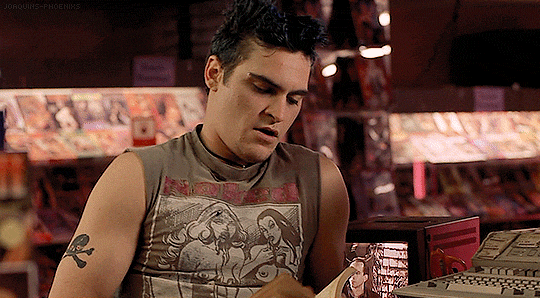
Turn-ons for Jimmy Emmett, Max California and Willie Gutierrez - request
Max helps his the reader with studying - request
COMMODUS
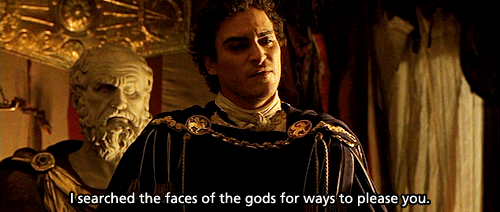
Commodus enjoys being a sub - request
WILLIE GUTIERREZ

Be my secret Valentine - request
Turn-ons for Jimmy Emmett, Max California and Willie Gutierrez - request
Willie being jealous of his s/o - request
SHORT - Tucking their hands beneath the other person's shirt, just to see them break the kiss and gasp in surprise at the sensation of cold/warm hands on their skin - request
WADE WILSON
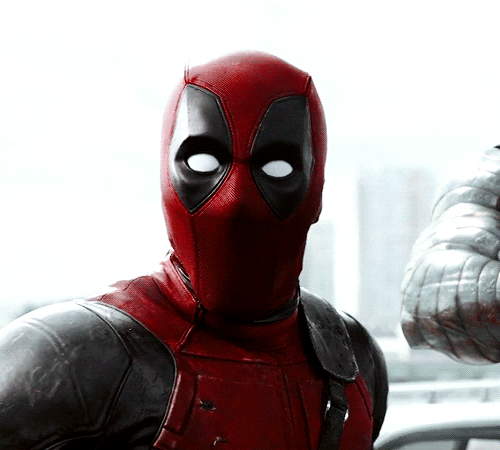
Was it planned? - request
#Joaquin Phoenix#joker imagine#arthur fleck imagine#joaquin phoenix x reader#commodus x reader#joe x reader#abbe de coulmier x you#max california x reader#bruno weiss x reader#the spy who dumped me sebastian#wade wilson x reader#tate langdon x reader#moon knight x reader#sherlock holmes x reader#martin whitly
158 notes
·
View notes
Text
Every rebellions, plots, conspiracies, and seditions against Henry VII, by chronological order.
1485: Henry VII becomes king after his victory at Bosworth. Two hundred men from the Calais garrison flee to Flanders.
1486: attempted murder against Henry VII at York. The Stafford brothers rebel and take Worcester, while viscount Lovell rebels in Richmondshire. Eventually, the Stafford brothers are captured and one executed, while Lovell flees in Flanders to the court of Margaret of York, dowager duchess of Burgundy.
1487: Lambert Simmel's rebellion. A Yorkist conspiracy proclaims a commoner Lambert Simmel to be the escaped earl of Warwick from the Tower (Edward Plantagenet, nephew of Richard III and Edward IV). He is proclaimed 'Edward V' in Dublin by the Anglo-Irish aristocracy and joined by 2,000 german mercenaries led by viscount Lovell and his cousin John de la Pole, Earl of Lincoln. With a mixed german-irish force, Landing in Lancashire enjoyed limited defection in northern England (mainly lord Bolton of Scrope, lord Bolton of Masham, and Sir Thomas Broughton). Their ~8,000 force is beaten at Stoke by a Tudor army led by the king and the earl of Oxford. Death of Lincoln and Lovell, Simmel is spared. Before the rebellion, Henry VII preemptively jails some key Yorkists, including his mother-in-law Elizabeth Woodville and his brother-in-law the Marquess of Dorset.
1489: Anti-tax rebellion in Yorkshire. The rebels led by Sir John Egremont murder the earl of Northumberland and take York before dissolving at the arrival of the royal army. Egremont flees to the court of Margaret of York.
1491: At Cork, a man proclaims that he is Richard of Shrewsbury, the disappeared second son of Edward IV. His true identity remains unknown. ‘Richard’ receives immediate support nonetheless from some Yorkists such as John Taylor, a former supporter of the duke of Clarence (Edward IV's brother).
1492: 'Richard' land in France, where he was welcomed by Charles VIII, who is at war with England. Henry VII retaliate by an invasion from Calais and sign the treaty of Etaples. Charles VIII agreed to stop supporting English rebels and give the Tudor king a pension.
1492: The peace treaty is unpopular in England, and 'Richard' is welcomed in Flanders by Margaret of York and Maximilian of Habsburg, ruler of the Burgundian estates. Maximilian is angered by the separate peace Henry VII made without consulting him. He recognizes him as the rightful king of England. The news of Richard's survival and reappearance began to be known in England and test the allegiance of Henry VII's subjects.
1493: Henry VII retaliate by imposing a blockade on the Netherlands. Counter-measures ensued, leading to an embargo from both parties, which lead to riots in London. 'Richard' assists at Maximilian's coronation as Holy Roman emperor and is promised support for his restoration. Scotland and Denmark recognize his legitimacy.
1494: Maurice Fitzgerald, earl of Desmond, revolts against the Tudors and leads a rebellion in Munster.
1495: an essential group of plotters is arrested. It consists of the king's own Chamberlain and the most powerful knight in England, Sir William Stanley (he was mighty in Cheshire and had £10,000 of reserve in cash at his castle of Holt). Lord Fitzwater (important Calais official and landowner in East-Anglia), Sir Simon Mountford (significant landowner in Warwickshire), William D'Aubeney, Thomas Cressener, Thomas Astwode, and Robert Ratcliff. They were mainly former supporters of Edward IV, and some had connections with duchess Cecily's household. Sir Robert Clifford, one of the plotters, betrayed the entire plot and was pardoned. Others were fined or executed, like Stanley.
'Richard' prepares to invade England by East-Anglia with a force of exiled and Flemish mercenaries. Stormy winds scattered his forces and made him land in Kent, and his force of 300 soldiers is beaten by the Earl of Oxford at his arrival at Deal. He flees and lands with the remainder of his troops in Ireland, where the revolted earl of Desmond joins him. Their combined forces fail to take Waterford. After this defeat, 'Richard' and his supporters arrive in Scotland.
1496: restoration of trade between The Netherlands and England, as Henry VII join the Holy League against France. The earl of Desmond also makes his peace with Henry VII. A Scottish army invades England as 'Richard' promised to give Berwick £50,000 to the Scottish king James IV. Little result ensues except for some small raidings.
1497: 'Richard' marries a cousin of the Scottish king, Catherine Gordon. As the king of Scotland makes a truce with England, he tries to land once again in Ireland with Sir James Ormond's support. However, Ormond's murder led to the failure of the uprising, and 'Richard' flee from Ireland with three ships.
Taxation for the Scottish war led to the Cornish rising. A blacksmith, Michael Joseph, leads the revolt with lord Audley and brings many gentrymen from Cornwall to rebellion. The rebellion extends to neighboring counties as the rebel take Exeter and march to London, virtually unopposed. A 25,000 royal army face some ~15,000 rebels at Blackheath, near London, and triumph. Once again, the earl of Oxford's vanguard is instrumental for the victory against the rebel.
'Richard' finally land in Cornwall, hoping to bolster his support with the Cornish's discontent. An uprising in his favor occurs (second Cornish rebellion), and his 8,000 men fail to take Exeter. His attempted fleeing after the encirclement of his forces by the Tudors led to his capture at Bealieu abbey.
'Richard' confess he is an impostor and a Flemish by the name of Perkin Warbeck. He and his wife are welcomed at court.
1498: 'Richard' tries to escape court and is captured and jailed in the Tower of London.
1499: A Cambridge scholar by the name of Ralph Wiford dreamt that he would become king if he claimed he was the earl of Warwick. His uprising in East Anglia failed, and he is executed.
Edmund de la Pole, earl of Suffolk and brother of the Earl of Lincoln (thus nephew of Richard III), leave England for Flanders after killing a commoner in London before agreeing to come back.
The French hand over many supporters of 'Richard' in France, including John Taylor. Many are executed, but Taylor's life is spared.
An attempted escape made by 'Richard' and his cousin Edward, earl of Warwick, fail, and they are both executed.
1500-1503: Henry VII lost his wife in childbirth and two sons (Arthur and Edmund). Dynastic fragility ensue as Henry VII have only one surviving male heir.
1501: Edmond de la Pole and his brother Richard flee for the Flanders. Henry VII promptly jail their brother, William, with Sir James Tyrell and Lor William Courtenay. Royal officials are sent in East Anglia to monitor the de la Pole affinity. Sir James Tyrell 'confess' before his death the murder of the Princes in the Tower for Richard III.
1504: 'treasonous' talks between Calais officials. They argue about who would be the successor for a declining Henry VII and hesitate between the duke of Buckingham and the Earl of Suffolk, omitting Henry VII's children.
1506: The Habsburgs deliver Edmund de la Pole to Henry VII, who jail him at the Tower of London. In exchange, Henry VII loan them immense sums of cash, such as £108,000 in April.
1509: Henry VII dies, leaving the crown to his adult heir, Henry VIII.
I might have missed some small, aborted plot, but there it is.
With this chronology, it's evident that the War of the Roses (or, more accurately, the war of the succession crisis of 1483) didn't end at Bosworth. Henry VII could have been overthrown in 1487 or the late 1490s. There is also a clear distinction between the rebellions of the 1480s and those of the 1490s. The plot following HenryVII's advent is mainly coming from RichardIII's basis of power. It's his men (Lincoln, Lovell, many northerners), his bases of support (the North and Ireland) who try to overthrow the first Tudor.
The plots of ''Perkin Warbeck'' known in historiography, were perilous for Henry VII. Most of his dynastical legitimacy comes from his marriage to Elizabeth of York. A true surviving son of Edward IV would nullify this and put into question the support of every former servant of the late Yorkist king. Hence, Henry VII tried to depict 'Richard' as an impostor and to demonstrate that the Princes of the Tower were dead. Still, he couldn't convince everyone and had to resort to force and the systematic use of a spy network.
Some of those plots might have been exaggerated. The 1504 Calais plot was undoubtedly not a carefully crafted conspiracy but more a manifestation of Henry VII's difficult succession. This chronology also doesn't show the dubious role that many magnates had during this period of unrest. The loyalty of Lord Abergavenny (dominant in Kent) was put into question, as was one of the earls of Derby in the 1490s and Lord Daubeney. Henry VII didn't have many magnates on whom he could truly count.
As you can see, Henry VII was never wholly free from dynastic uncertainty. At his death, Richard de la Pole was still free to push his claim if his brother Edmund died. Henry VIII himself was very wary of potential claimants toppling him. His execution of Edmund de la Pole in 1513 and the duke of Buckingham in 1521 are the best manifestations of this insecurity.
#henry vii of england#war of the roses#tudor era#Perkin Warbeck is named 'Richard'#we don't have definite proof of his identity#richard iii
68 notes
·
View notes
Text
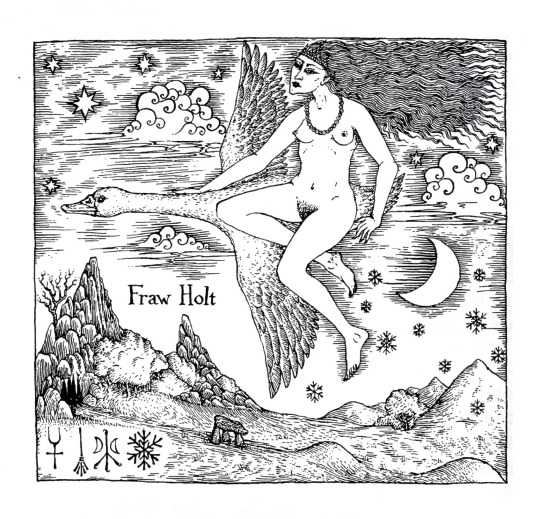
Fraw Holt or Dame Holda, the northern witch-goddess travelling upon her sacred goose through the night.
—
“Frau Holda , Venus Mountain and The Night Travellers
From the 10th Century c.e. onwards Frankish clerics and churchmen such as Regino of Prum fulminated sourly against the devilish ' belief of 'certeine wicked women that in the night times they ride abroad with Diana, the goddess of the pagans, or else with Herodias, with an innumerable multitude upon certeine beasts. This was echoed in the fourteenth century law-code of Lorraine which censured those who rode through the air with Diana. The image of the Wild Ancestral Goddess had a powerful influence upon the mediaeval imagination; the author of ‘The Romance of the Rose' wote that a third of the people have dreams of nocturnal journeys with Dame Habondia.
In Northern Europe, the sect of night travelling witches were held to fly through the sky in the retinue of the goddess Herodias or Holda, who leads the ancestral spirits of the Furious Horde in the winter months around Samhain and Yule. Like the Cymric goddess Cerridwen, Frau Holda is the archaic underworld Earth Mother, mistress of death, initiation and rebirth, who rules over the chthonic realm of Hel or Annwvyn. In Scandinavia she is known as Hela, the daughter of Loki, of whom it is related that half of her is fair and half black with decay. This signifies her bright and dark aspects as Freyja/Holda mistress of life and death. The Veiled Goddess encompasses the cosmic dualities of day and night, growth and dissolution, radiance and shadow. Her association with the Wild Hunt is strong in Germany where the ride of the death powers is sometimes called the Heljagd and in Normandy, Mesnee a Hellequin. The Indo-European original of this Witch Goddess is *KOLYO, 'the Coverer' the funereal Otherworld Queen of the Indo-European peoples from which figures as diverse as the Celtic Cailleach and Greek nymph Kalypso are descended.
The life/death aspects of Dame Hela were referred to by the German wizard, herbalist and crystal scryer Diel Breull of Calbach who confessed in 1630 that he had travelled to the pagan holy mountain, the Venusberg, 'four times a year, during the fast.' He had no idea how he got to the mountain. He then confessed he was a night traveller and 'the Frau Holle (to whom he travels) is a fine woman from the front but from the back she is like a hollow tree with rough bark. It was in Venus mountain that he came to know a number of herbs.'
This description corresponds with the female forest spirit called the Skogfru in Old Norse and the woodwife, birch maiden and wild damsel elsewhere who are beautiful women from the front but hollow behind like a rotten log. The woodwives are associated with the Wild Hunt, sometimes being pursued by Woden . (‘Woodwife’ and ‘woodwose’ both stem from the Saxon root-word ‘Wod’ - ‘wild, furious, enthused’). Like many native European initiation sites, the Hurselberg was regarded as the gateway to the underworld, the domain of Frau Venus, the classicized Freyja/Holda. From the Hurseloch cave on the mountain eldritch voices and wailing could sometimes be heard, for it led down into the magical realm of the goddess.
The mediaeval tale of Tannhauser is based upon this initiatory lore for he was a knight minnesinger (troubadour) who while riding past the cavern of the Hurselberg at twilight encountered the beautiful and entrancing Frau Venus, who took him below into the Otherworld regions to be her consort for seven years. In Scottish tradition a related pattern is exemplified by Thomas the Rymer, the thirteen century seer who met the Queen of Elfame beneath the Eildon Thorn and went with her into the world of Faery for seven years.
She gave Thomas a golden apple to eat which conferred the prophetic gift upon him. This is reminiscent of Woden's descent into the heart of Suttungr's mountain where he sleeps with the giantess Gunnlodd to attain the mead of poetic inspiration.
Such goddess forms are comparable to the shamanic Clan Mother of the nether-world in Siberian mythology. And we may note that the worship of the Northern Earth Mother Jord/Hlodyn was carried out at hills and mounds, symbols of the womb of the earth. The Furious Horde at Samhain is esoterically linked with the rune Haegl whose primal form ‘*’ represents the snowflake. This makes sense as Holda is traditionally held to shake down the snow onto the countryside; in the Channel Isles snow showers occur when Herodias shakes her petticoats. Her holy bird, the goose, is also connected with the Wild Hunt, and snow crystals are said to drift from its feathers as it flies overhead. The nocturnal cries of migrating geese are interpreted as the yelping of ghostly Gabriel hounds in Celtic lore and are symbolised by the Bird-Ogham Ngeigh at Samhain. The mystical Ninth Mother-Rune symbolises the nine nights the post-mortem soul takes to travel the Hel-Way, the prototypical Spirit-Road which runs northwards into the Underworld of Helheim.
Frau Holda is the heathen original of Mother Goose, who is remembered at winter tide, and the goose is the magical steed upon which Arctic shamans travel in visionary flight to the Otherworld. The witch Agnes Gerhardt confessed in 1596 that she and her fellow initiates used a vision-salve in order to fly to the dance like snow geese', and went on to describe how she prepared this hallucinogenie ointment by frying tansy, hellebore and wild ginger in butter mixed with egg. Such flying salves' (or Unguentum Sabbati) feature prominently in the worteunning of the night travelling witches.
In fact Styrian witches were still using them in the 19th Century. Hartliepp, court physician of Bavaria, gives a formula used by 15th century Northern witches which involves procuring seven herbs on the appropriate days of the pagan week - heliotrope on Sunna's day, fern on moon day, verbena on Tiw's day, spurge on Woden's day, houseleek on Thor's day, maidenhair on Freyja's day and nightshade on Saeter/Hela's day. This magical operation would ensure that the salve would be empowered with the energies of the principal heathen deities.
In 1582 the Archbishop of Salzburg's counsellor, the erudite mathematician and astrologer Dr. Martin Pegger, was arrested under the charge that his wife had flown with the night travellers to the goddess Herodias in the Unterberg. Within the mountain she had seen Herodias with her mountain-ladies and mountain-dwarves and the goddess is said to have come to Frau Pegger's house by Salzberg fish market on a later occasion. The mention of the goddess' mountain-dwarves is significant for they are sometimes known as the Huldravolk; the folk of the Elder, Frau Holda's holy tree.
The association of cats and hares with witches and night travellers may indicate that they inherited many of the magical techniques from the cult of Seidr, the shamanism of 'inner fire' sacred to the goddess Freyja which included trance journeys and communication with the elves and other entities. According to Saxon lore, Freyja sometimes appears amidst a company of hares and she is known to roam the meadows of Aargau with a silver-grey hare by her side in the night hours. The hare is famed as a totem form in which shapeshifting witches travel.

Freyja, the Teutonic goddess of love, sexuality and mantic sorcery riding a Siberian tiger.
It is know that a strong subterranean current of Freyja worship survived in mediaeval Germany. Closely related initiatory Mysteries existing in the British Isles usually centred on the Faerie goddess, the Queen of Elphame.
An interesting late case is the astrologer and Hermeticist John Heydon in the 17th century, who having imprudently predicted Cromwell's death was forced to flee from London to Somerset. There he claimed to have encountered a green- robed lady at a faery hill. She took him within the mount into a glass castle where he learnt much wisdom and mantic lore. This experience obviously took place in an altered state of shamanic perception.
Frau Holda is the feminine counterpart of the Master of the Wild Hunt, and she is essential to a balanced appreciation of this area of pagan spirituality. The night- travelling witches of the Northern Lands, far from being demonically deluded as ignorant and vindietive churchmen said, were in reality the preservers of a hoary Wisdom Tradition and magical world view which is now accessible to us again at the dawning of a new heathen aeon.”
—
Call of the Horned Piper
by Nigel Aldcroft Jackson
#call of the horned piper#Nigel aldcroft Jackson#magic#witchcraft#traditional withcraft#grimoire#fraw holt#dame holda
270 notes
·
View notes
Text
Marvel: Young Avengers Protocol to Origins of Grayson Clarke.
Character to Actor:
The Clarke Family:
Grayson Clarke- Chris Wood
Zoey Clarke- Lily Collins
Sally Clarke- Kim Rhodes
Thomas Clarke- Christopher Cousins
The Stacy Family:
Gwen Stacy- Madison Iseman
Simon Stacy- Jacob Tremblay
Phillip and Howard Stacy- Freddie Highmore
Helen Stacy- Susanna Thompson
George Stacy- Mark Harmon
Jill Stacy- Emma Watson
Arthur Stacy- Sean Bean
Paul Stacy- Paul Walker
Miles Warren- Dave Annable
The Parker Family:
Ben Parker- Tom Cavanaugh
Richard Parker- Daniel Gillies
Mary Parker- Rachel Leigh Cook
The Morales Family:
Miles Morales- Jordan Fisher
Rio Morales- Danielle Nicolet
Jefferson Davis- Russell Richardson
Aaron Davis- Donald Glover
Young Avengers:
Rayshaun Lucas- Trevor Jackson
Kate Bishop- Hailee Steinfeld
Daisy Johnson- Shan Dodd
Bobbi Morse- Olivia Holt
The Fantastic Four:
Reed Richards- John Krasinksi
Susan Storm- Hilarie Burton
Johnny Storm- Zach Roerig
Ben Grimm- Conan Stevens
Defenders:
Luke Cage- Michael Jai White
Jessica Jones- Jessica De Gouw
Matt Murdock- Colin Donnell
Danny Rand- Josh Segarra
Marc Spector- Stephen Amell
Elektra Natchios- Julia Voth
X-Men:
Charles Xavier- Patrick Stewart
Logan- Hugh Jackman
Hank McCoy- Ewan McGregor
Ororo Munroe- Sonequa Martin-Green
Scott Summers- Sam Claflin
Jean Grey- Jane Levy
Kurt Wagner- Thomas Doherty
Bobby Drake- Brandon Flynn
Emma Frost- Josephine Langford
Piotr Rasputin- Daniel Cudmore
Warren Worthington- Alex Pettyfer
Alex Summers- Lucas Till
Sean Cassidy- Cameron Monaghan
Kitty Pryde- Danielle Rose Russell
Anna Marie- Elizabeth Gillies
Elizabeth Braddock- Michelle Keegan
Danielle Moonstar- Blu Hunt
Megan Gwynn- Natalie Dormer
Roberto De Costa- Froy Gutierrez
Illyana Rasputin- Anya Taylor-Joy
Tyrone Johnson- Roshon Fegan
Tandy Bowen- Virginia Gardner
Rahne Sinclair- Rose Leslie
Sam Guthrie- Charlie Heaton
(Various other students)
Brotherhood of Mutants:
Eric Lehnsherr- Dacre Montgomery
Raven Darkholme- Pauley Perrette
Cain Marko- Nathan Jones
Victor Creed- Liev Schrieber
Todd Tolenksy- Aramis Knight
Fred Dukes- William Berry
Dominic Petrakis- Toby Kebbell
Karl Lykos- Luke Evans
Jeanne-Marie Beaubier- Kaya Scodelario
Arkady Rossovich- Dolph Lundgren
Laynia Krylova- Tracy Spiridakos
(Various other Mutants)
Villains:
Otto Octavius- Mark Sheppard
Sergei Kravinoff- Manu Bennett
Flint Marko- Dominic Purcell
Max Dillon- Aaron Paul
Curt Connors- Jeffrey Dean Morgan
Morgan Le Fay- Katie McGrath
Martin Li- Stephen Oyoung
Lana Baumgartner- Emily Wickersham
Victor Von Doom- Viggo Mortensen
Carl Creel- Brian Patrick Wade
Wendigo King
Aleksei Sytsevich- Andrey Ivchenko
Tony Masters- Jason Statham
Edward Whelan- Julian Bleach
Zebediah Killgrave- David Tennant
Benjamin Pointdexter- Edgar Ramirez
Melissa Gold- Maika Monroe
Morrie Bench- Ben Foster
Thundra- Rebecca Quin
Sinthea Schmidt- Phoebe Tonkin
Other Characters:
Tim Elwood- Drew Roy
Grace Elwood- Lauren Roy
Ava Ayala- Tristan Mays
Felicia Hardy- Marie Avgeropoulos
Morgan Tyler- Hartley Sawyer
Flash Thompson- Michael Provost
Elena Gold- Nicola Peltz
Riri Williams- Candice Patton
Kamala Khan- Iman Vellani
Dante Pertuz- Jake T. Austin
MJ Watson- Sophie Skelton
Harry Osborn- Liam Hall
Norman Osborn- James Redford
Mendel Stromm- David Dayan Fisher
Cletus Kasady- Jackie Earle Haley
Eddie Brock- Alan Ritchson
J. Jonah Jameson- J.K. Simmons
Jean De Wolfe- Sandra Bullock
Jennifer Walters- Mary Elizabeth Winstead
Yuri Watanabe- Tara Platt
Richard Rider- Liam McIntyre
Sam Alexander- Dylan O'Brien
Eileen Harsaw- Camilla Belle
Mikhail Uriokovitch Ursus- Olivier Richters
Rachel Van Helsing- Katheryn Winnick
Jacob Russoff- Kristofer Hivju
Eric Brooks- Duane Henry
Robbie Reyes- Tyler Posey
Kari Lyngley- Katherine McNamara
Jared Lyngley- Ross Lynch
Bruce Banner- Eric Bana (Re-cast)
16 notes
·
View notes
Text
We're at 26 characters now which is just over halfway there, so get your entries in to help us fill the remaining slots. We'll get the Body Swap Brawl underway once we hit 48.
Here's a list of who we've already got. Is your fav missing from this list? Or is there a hero or villain class not represented that should be? How about someone whose powers will just plain cause chaos? Sign them up to join the brawl!
--
UPDATED! 48 characters now! All slots filled!!
Ace (the Bat-Hound)
Barda (Big Barda)
Bart Allen (Impulse)
Beatiful dreamer (Of the New Gods)
Big Bear (Of the new Gods)
Billy Batson (Shazam/Captain Marvel)
Bruce Wayne (Batman)
Cassandra cain (Batgirl/Black Bat)
Clark Kent (Superman)
Cliff Steel (Robotman)
Dawn granger (dove)
Diana (Wonder Woman)
Dick Grayson (Nightwing/Robin)
Duke Thomas (The Signal)
Ernst (The Brain)
Garth (Tempest/Aqualad)
Greg Saunders (Vigilante)
Guy gardner ( green lantern)
Hank hall (hawl)
Harleen Quinzel (Harley Quinn)
Jaime Reyes (Blue Beetle)
Jason Blood (etrigan)
Jason Todd (Red Hood)
Jean-Paul Valley (Azrael)
Jo Mullein (Green Lantern)
Jon Kent (Superboy The Second)
Klarion The Witchboy, Lord of Chaos
Kon-El/Conner Kent (Superboy)
Leonard Snart (Captain Cold)
Lex Luthor
Lightray( Of the new gods)
Mark Moonrider (Of the new Gods)
Michael Holt (Mr.Terrific)
Orion (Orion of the new Gods)
Ralph Dibny (Elongated Man)
Roy Harper (Speedy/Arsenal/Red Arrow)
Scott free (mister miracle)
Serifan (Of the new Gods)
Sir Justin (Shining Knight)
Slade Wilson (Deathstroke)
Talia al Ghul
Ted Kord (Blue Beetle)
The Black Racer (Death is the Black Racer)
The Joker
Tim Drake (Red Robin)
Vykin (vykin the black)
Wally West (Flash)
Zatanna Zatara (Zatanna)
9 notes
·
View notes
Text
Looking for DC Comics RPers! DC Next Gen Amino takes place 15 years in the future, older generations (Bruce Wayne, Dick Grayson) are retired but younger generations (Jason Todd, Tim Drake, Damian Wayne) are still going! Warning: lots of OCs! Upper case is what we especially want. Anyone not on the list is still welcome!
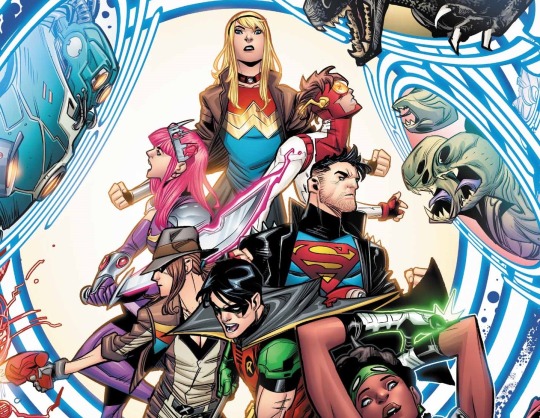
DO NOT JOIN IF PREJUDICED AGAINST MINORITIES.
no batcest or anything of the sort.
We’re an awfully friendly and silly group, so be prepared! Semi-lit to literate rps, no illiterate please!
Characters already from the future like Terry McGinnis and Carrie Kelly will be the same age as canon, everyone else will be 15 years older than Pre-52 versions

http://aminoapps.com/c/NextGenDc
Looking for (by group):
•Batfam: ✨ALFRED PENNYWORTH THE IMMORTAL!✨BARBARA GORDON (wheelchair or nothing), Kate Kane, Harper Row, Duke Thomas, Luke Fox, TERRY MCGINNIS, Matt McGinnis, Thomas Grayson, John Grayson, Maxine Gibson, Janet Drake, Rocky Ballentine, Sonia Alcana, CARRIE KELLY, Duela Dent, all of Gotham Academy, COLIN WILKES, Tiffany Fox, Maya Ducard, Harvey Dent
•Titans: DONNA TROY, ROY HARPER, Garth/Tempest, Starfire/Koriand’r, Amistad Ervin
•Team Arrow: OLIVER QUEEN (comics), EMIKO QUEEN, Robert Queen, Jonathan Queen, Connor Hawke
•Flashfam: Barry Allen (comics), Iris West-Allen, Linda Park-West, Jesse Chambers, Danica Williams, Jeven Ognats, Meloni Thawne
•Young Justice: Cassie Sandsmark, CONNER KENT, BART ALLEN, Mia Dearden, Lorna Marquez, Cir-El
•Green Lanterns: HAL JORDAN, all of the lanterns, Tai Pham, Milagros Reyes, Jason Jordan
•League of Assassins: Mara Al-Ghul, Athanasia Al-Ghul, TALIA AL-GHUL, Nyssa Raatko, BETHANY THORNE, Ibn Al Xu’ffasch
•Aquafam: Ceridian, ARTHUR CURRY JR, Arthur Curry, Mera
•Superfam/Shazam Fam: KARA KENT, Ariella Kent, Susie Thompkins, Lara Lane-Kent, Kathy Branden, LOIS LANE, Clark Kent, Lex Luthor, Chris Kent, Billy Batson, Mary Batson, Darla Dudley, Freddy Freeman, Eugene Choi, Pedro Peña, Jimmy Olsen, Cissie Summerly
•Magic Fam and others: ZATANNA & John Constantine, Boston Brand, Rose Constantine, Booster Gold & Blue Beetle, Rani Carter, Jacob Free, Susie Lang, Jenny Quantum, Luke McDunnagh, Ramsey Robinson, Maxine Baker, Imako Hoshi, Traya Sutton
•Wonderfam: Hunter Prince, Hippolyta Milton, Peony Gill, Terry Long, Nubia
•Justice Society: Matthew Tyler, Jack Knight, Hector Hall, Kendra Saunders, Courtney Whitmore, Micheal Holt, Jakeem Williams, Jennifer Pierce, Kyle Knight, Patricia Dougan, Violet Robinson, Malcolm Allen
•Rogues: Colin McCulloch, Jerrie Rathaway, Joshua Jackham, Billy Hong, Owen Mercer
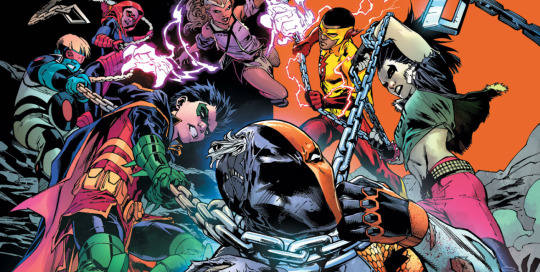
If your character isn’t on this list, but you want to join, here’s a list of canon characters we have
Future state characters welcome!

Once again, this is mostly an OC group, we’re trying to get more canon characters in.
We have:
•Batman Villains: Pamela Isley, Harleen Quinzel, Lucy Quinn, Hazel Isley, Thorn Isley, Rose Isley, Selina Kyle, Shawn Tsang,
•Batfamily: Bruce Wayne, Nell Little, Helena Wayne, Cassandra Cain, Bette Kane, Stephanie Brown, Dick Grayson, Jason Todd, Damian Wayne, Kathy Duquesne, Tim Drake, Alysia Yeoh
•Team Arrow: Dinah Lance, Connor Queen, Sin Lance, Lian Harper
•Flashfam: Wally West, Jai & Irey West, Jenni Ognats, Don Allen, Dawn Allen
•Wonderfam: Diana Prince, Hippolyta Prince (daughter, not mother)
•Superfam: Jon Kent, Karen Starr
•other: Helen Jordan, Thomas Blake Jr, Isabelle Rose Mahkent
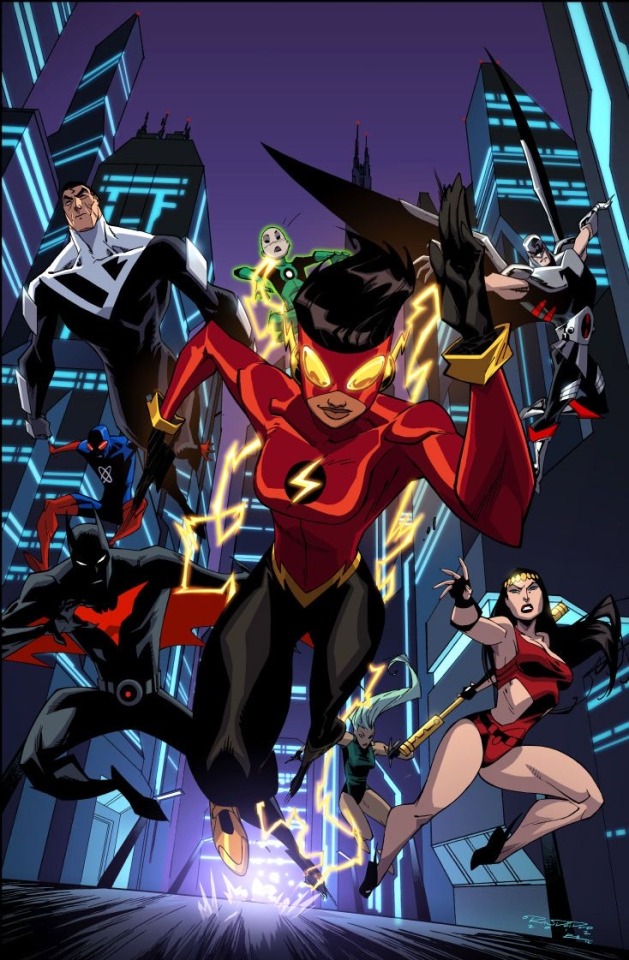
That’s it! Thanks! ❤️
#dc comics rp#dc rp#dc comics roleplay#dc roleplay#dc universe rp#dc universe roleplay#Batfamily rp#Batfamily roleplay#Superman rp#young justice rp#teen titans rp#justice league rp#batman beyond rp#batfam rp#batfam roleplay#detective comics#dc comics amino#dc amino#roleplay amino#rp amino#amino apps#amino
77 notes
·
View notes
Text
FREAKY: ORIGINS - CAST LIST
Thomas Doherty as Barney Garris
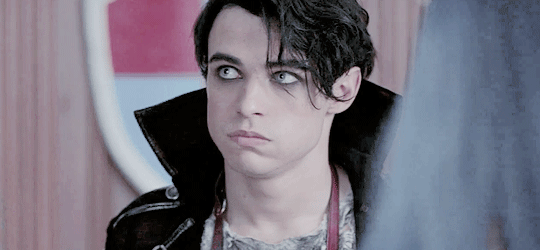
The future Blissfield Butcher. An introverted and somewhat reclusive teenage boy with a fascination with both medicine and the occult. Ostracised at school for his ‘strange’ behaviour, as well as his height.
Olivia Holt as Jennifer ‘Jenny’ Bucchanan

The popular peppy cheerleader with a heart of gold. Barney’s love interest who is the only person who shows him respect and affection. Appears to be a bit ‘dumb’ or ‘naive’, but is still very much well liked.
Aramis Knight as Wade Collins
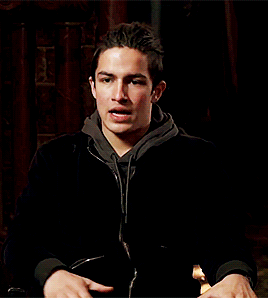
One of Blissfield Valley High’s footballers and the main tormentor of Barney. Wade used to date Jenny, until she broke up with him for unknown reasons. Is a total asshole and the big man on campus.
Paris Berelc as Sandra Trinidad

The school’s local gossip hound who’s in with the popular crowd. She’s one of the nicest members of the group, but still gives Barney the cold shoulder. Is best friends with Jenny and often hangs out with her at lunchtime.
Leo Howard as Marty Fontaine

Linebacker for the Blissfield Valley Beavers. A total dumbass, who mainly follows along with Wade in his torment of Barney. Has a secret stash of drugs in his locker that he’s been selling to the whole school.
Abigail Cowen as Deborah ‘Debbie’ Spears

A somewhat nerdy and reclusive teenager who shares Barney’s love of the occult. Writes poetry in her spare time. Secretly has a crush on Barney but hides it from him because he likes Jenny.
Kaya Scodelario as Victoria ‘Vicky’ Garris

Barney’s college aged older sibling and technical legal guardian due to their neglectful parents. Fell into booze and drugs because of the stress of being both a college student and the 'parent’ of Barney. Indirectly helps with his reclusive nature.
Jamie Lee Curtis as Coach Norma Thompson

The track team coach of Blissfield Valley High who sees Barney’s potential as a star athlete. She’s pretty much the only one for the whole movie that is on his side - think like the gym teacher from Carrie.
ADULT CAST TBD
TAGLIST
@seize-the-droid @anotherunreadblog@ocfairygodmother @randomfandoming1 @eddysocs @foxesandmagic @vivis-ghost-wife @witchofinterest
FREAKY OCS TAGLIST
@hughstheforcelou
#ocappreciation#ochub#queerocs#freakyocs#story: freaky origins#OC: Jenny#OC: Wade#OC: Sandra#OC: Marty#OC: Debbie#OC: Vicky#OC: Norma
11 notes
·
View notes
Note
I don't care .I could play female or male . Faces for a stefan and caroline kid
Male
Alex Pettyfer
Alex Roe
Alexander Ludwig
Ansel Elgort
Ashton Irwin
Austin Butler
Chace Crawford
Chris Hemsworth
Chord Overstreet
Colton Haynes
Dan Stevens
Dave Franco
Dylan Sprouse
Hero Fiennes Tiffin
Hunter Parrish
Jeremy Irvine
Joel Courtney
Josh Hutcherson
Liam Hemsworth
Logan Lerman
Louis Tomlinson
Lucas Grabeel
Luke Hemmings
Luke Mitchell
Michael Clifford
Miles Heizer
Niall Horan
Nico Tortorella
Oliver Jackson-Cohen
Rhys Wakefield
Robert Pattinson
Ross Lynch
Rudy Pankow
Ryker Lynch
Sterling Knight
Thomas Brodie-Sangster
Tom Felton
Zac Efron
Female
Abby Ross
Abigail Breslin
Amanda Seyfried
Amanda Seyfried
AnnaSophia Robb
Ashley Benson
Ashley Olsen
Ashley Tisdale
Billie Lourd
Blake Lively
Bridgit Mendler
Britt Robertson
Cara Delevingne
Caylee Cowan
Chloë Grace Moretz
Debby Ryan
Eliza Taylor
Elizabeth Olsen
Elle Fanning
Emily Osment
Emma Roberts
Evanna Lynch
Gabriella Wilde
Haley Lu Richardson
Halston Sage
Hayden Panettiere
Hilary Duff
Indiana Evans
Jennifer Lawrence
Jordyn Jones
Kathryn Newton
Kiernan Shipka
Kristen Stewart
Liana Liberato
Lili Reinhart
Lily James
Lucy Fry
Madison Iseman
Margot Robbie
Mary-Kate Olsen
Nicola Peltz
Olivia Holt
Rita Volk
Saoirse Ronan
Sasha Pieterse
Shailene Woodley
Spencer Locke
Sydney Sweeney
Taylor Momsen
Taylor Swift
Willa Fitzgerald
Zoey Deutch
If you need more suggestions just ask!

2 notes
·
View notes